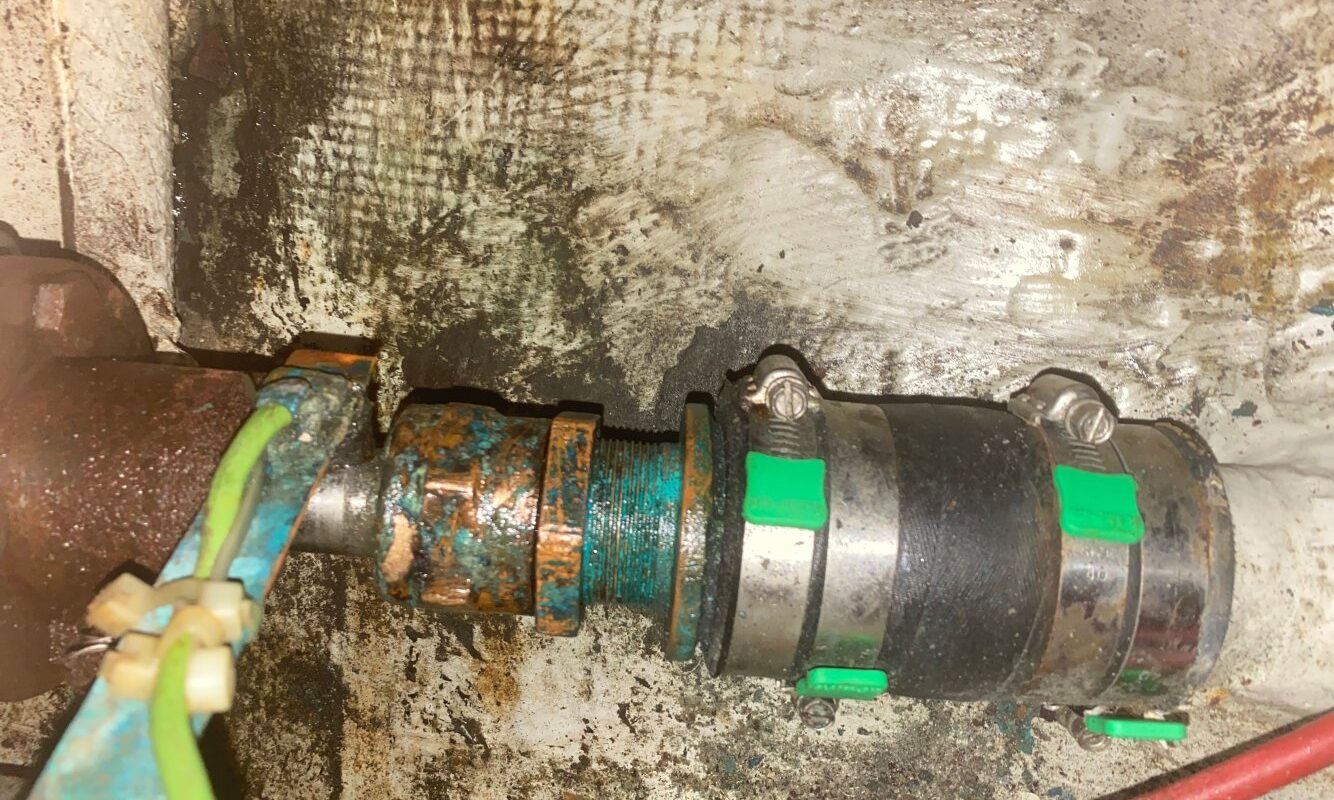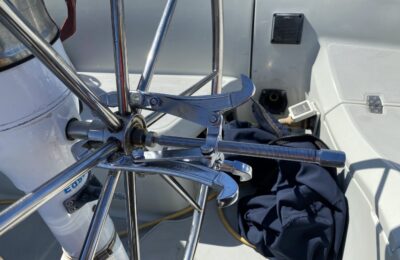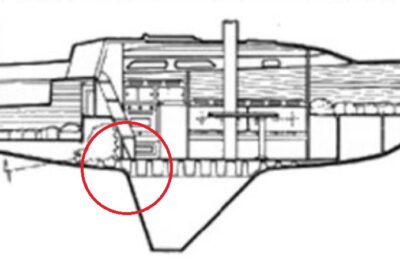I’m learning everything about keel sailboats as I go about fixing my own.
A basic problem that boats with so-called “auxiliary” engines have is that inside the nice warm dry hull there is a (usually small, Japanese, tractor, diesel) engine and outside there is da cold ocean, brah. Or a big lake. In between there is a propeller shaft spinning feverishly, which must be allowed to do so in order to make use of the engine. So how do we keep the water out?
It seems like there are two basic solutions. The traditional answer is a stuffing box, and the more new-fangled version is something called a Packless Shaft Seal (PSS), made by PSI Inc. First I’ll tell you what I think I have learned about stuffing boxes, then say a little less about PSS shaft seals. Here’s what my stuffing box looked like a few days ago:
Here’s someone else’s stuffing box from Wikipedia with labels. Mine is almost exactly like this, but crustier:
Here’s a cross-section so that you can see the packing gland parts that reside in between the locking nut and the adjusting nut.
Neither the purple FABRIC REINFORCED HOSE nor the Red/White crosshatched “PACKING GLAND ASSY.” turn or move.
Only the pea-soup green propeller turns.
When the propeller spins, the rotation causes friction, which causes heat. The packing gland(s) is/are small pieces of rope or fabric or any number of materials that are supposed to let some water drip through to allow the shaft to be cooled.
In the forum post I mentioned at the beginning, another person referred the thread to Maine Sail’s lengthy article on stuffing boxes. I know Maine Sail is an expert, but he has a tendency to make things seem really complicated and difficult. Here’s the Maine Sail article if you want to read it. I learned something. I think I learned that changing the packing gland is difficult and prone to being done in non-Maine Sail ways.
My engine compartment box didn’t look like Maine Sail’s clean room demonstration piece. I put some dandy rubber covers on the pipe clamps on the fabric hose so as not to murder my knuckles. I scrubbed off some of the patina from the aged bronze fittings. I sprayed some PB blaster on the threads. I took a couple of channel-lock pliers and I fiddled with the adjusting and locking nuts.
I would add, that one does need to have two tools to grasp the locking nut and the adjusting nut. If you don’t isolate your twisting with a second tool, and you twist the adjusting nut, you’ll wind up torque-ing on the bronze stuffing box, twisting it in the rubber fabric hose. I don’t know very much, but twisting the rubber hose keeping the ocean out of one’s boat seems like a bad idea.
So, with the boat out of the water, I twisted the adjusting nut back and forth, and satisfied myself that I could tighten it or loosen it some if I need to. I didn’t actually pull the propeller out or even unscrew the adjusting nut far enough to see the packing material. I haven’t had any problems with the stuffing box, and I don’t want any. But that’s probably what every guy who owned my boat for the last 20 years has been saying.
Isn’t there a better way, so one doesn’t have to go through all of the packing gland nonsense that the Maine Sail blogger makes complicated?
I think a number of people have chosen the PYI Packless Shaft Seal instead.
Here’s the PYI web site.
The shaft seal works differently from a stuffing box. Here’s a cross section:
The “rotor” is fixed on and spins with the rotating shaft and keeps water out of the boat with constant contact with the Carbon Stator. The Stator is pressed up against the rotor by the flexible bellows. The large end of the bellows is clamped on to the boat’s fiberglass shaft log (hollow tube) through which your propeller passes out to the water through your hull.
I don’t really have much else to say about the dripless shaft seals as I have not seen one in person. I am inclined to install one the next time I haul out my boat as they seem to be lower maintenance than the traditional stuffing box. In the process of searching for an image of a cross section of a PSS dripless shaft seal, I came across this article, which can probably be described as a better informed version of this blog post I have been writing.
So, that’s what I’ve learned about stuffing boxes thus far and how I inspected my own, during my first haul-out.



